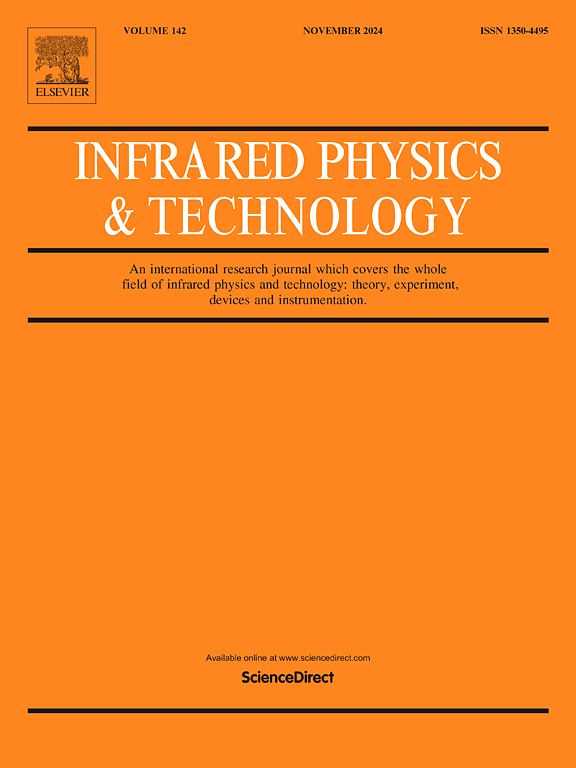nBn红外光电探测器中少数载流子寿命和工作电压与阻挡层厚度的关系
IF 3.4
3区 物理与天体物理
Q2 INSTRUMENTS & INSTRUMENTATION
引用次数: 0
摘要
XBn InAs/InAsSb架构现在是设计具有更高工作温度的高性能中波红外光电探测器的标准。本文研究了阻挡层厚度对这种探测器的电学和电光特性的影响。研究表明,该参数对导通电压和载流子寿命有重要影响。推导了一个模型来分析该电压与BL厚度和掺杂条件的关系。发现在100 ~ 140 nm之间的最佳厚度可以使其最小化。此外,随着BL厚度的增加,观察到少数载流子寿命的减少。研究了温度和外加偏置电压对这种特性的影响。本文章由计算机程序翻译,如有差异,请以英文原文为准。
Minority carrier lifetime and operating voltage dependence on the barrier layer thickness in nBn infrared photodetectors
XBn InAs/InAsSb architectures are now a standard to design high performance mid-wave infrared photodetectors with increased operating temperatures. In this paper, the influence of barrier layer (BL) thickness on the electrical and electro-optical characteristics of such detectors is investigated. The study shows that this parameter has a key role on turn-on voltage and carrier lifetimes. A model is derived to analyze the dependence of this voltage on BL thickness and doping conditions. It is found that an optimum thickness comprised between 100 and 140 nm can minimize it. Additionally, a decrease in the lifetimes of minority carriers is observed as the BL thickness is increased. This behavior is studied as a function of temperature and applied bias voltage.
求助全文
通过发布文献求助,成功后即可免费获取论文全文。
去求助
来源期刊
CiteScore
5.70
自引率
12.10%
发文量
400
审稿时长
67 days
期刊介绍:
The Journal covers the entire field of infrared physics and technology: theory, experiment, application, devices and instrumentation. Infrared'' is defined as covering the near, mid and far infrared (terahertz) regions from 0.75um (750nm) to 1mm (300GHz.) Submissions in the 300GHz to 100GHz region may be accepted at the editors discretion if their content is relevant to shorter wavelengths. Submissions must be primarily concerned with and directly relevant to this spectral region.
Its core topics can be summarized as the generation, propagation and detection, of infrared radiation; the associated optics, materials and devices; and its use in all fields of science, industry, engineering and medicine.
Infrared techniques occur in many different fields, notably spectroscopy and interferometry; material characterization and processing; atmospheric physics, astronomy and space research. Scientific aspects include lasers, quantum optics, quantum electronics, image processing and semiconductor physics. Some important applications are medical diagnostics and treatment, industrial inspection and environmental monitoring.

 求助内容:
求助内容: 应助结果提醒方式:
应助结果提醒方式:


